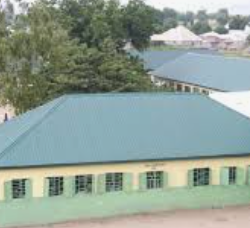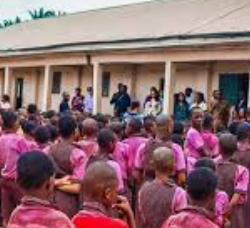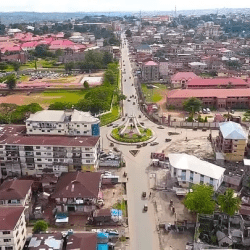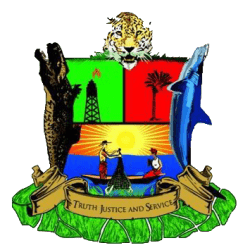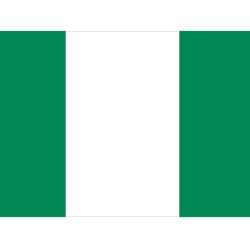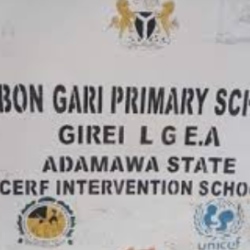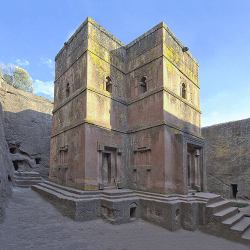THE THIRD BAYELSA STATE HOUSE OF ASSEMBLY
This covers the period June 4, 2007 – June 4, 2011. It was constituted on June 4, 2007 in the Assembly Complex, Yenagoa.
MEMBERSHIP:
The third Assembly is currently made up of 24 members, (23 male and 1 female) representing 24 state constituencies. It is an all PDP house. See Membership list
LEADERSHIP:
The Third Assembly is presently headed by Rt. Hon.Werinipre Seibarugu (Yenagoa II) as Speaker. He is being assisted by 5 other House Officers, selected from among members of the house. (See list for details).
HISTORY OF BAYELSA STATE HOUSE OF ASSEMBLY FROM 1999 TO 2009
The Bayelsa State House of Assembly is a product of an election with tenure of four (4) years. After which, it is dissolved and another assembly reconstituted. Each tenure of four years is called Assembly.
THE FIRST BAYELSA STATE HOUSE OF ASSEMBLY
This covered the period June 2, 1999 to June 2, 2003. It was formally inaugurated on June 2, 1999 at the Assembly complex Yenagoa.
MEMBERSHIP:
The first House was made up of 24 members representing 24 Constituencies in the state. Out of these, 23 were male and only one was female. The membership was spread among three political parties, namely people Democratic party (PDP), All Nigerian Party (ANPP), formerly All people party (APP), and Alliance for Democracy (AD). PDP was in the Majority with 15 Member; while ANPP and AD formed the minority with 6 and 3 members respectively ( see full membership list for details).
LEADERSHIP:
The leadership of the First Assembly was made up of Rt. Hon. Heineken Lokpobiri (PDP) Ekeremor Constituency 11 as speaker and twelve (12) others. The first assembly had two (2) speakers in all, viz Heineken Lokpobiri and Peremobowei Ebebi. Mr Ebi Domo spiff was the first clerk of the house, and was later replaced by Elder P. K. George.
The Second Bayelsa state house of assembly
This covered the period of June 2, 2003 to June 2, 2007; and was constituted on June 2, 2003 at the assembly complex, Yenagoa
MEMBERSHIP:
The second Assembly was made up of 24 members, all male representing 24 constituencies in the state. Twenty three (23) out of the twenty four (24) members of the second assembly were of the PDP, while one was of the AD. The latter edged out his opponent, who was of the PDP, at the election petitions tribunal. He however later defected to the PDP.
LEADERSHIP:
The second Assembly was headed by Rt Hon. Boyelayefa Debekeme (PDP) Ekeremor 11, as Speaker, with five other principal officers as the House Leadership (see Membership list for details)
The second Assembly had three (3) Speakers in all namely, Boyelayefa Debekeme, Peremobowei Ebebi and Werinipre seibarugu. The second speaker in the 1ST and 2ND Assemblies, Rt. Hon. Peremobowei Ebebi later resigned as speaker of the House, following his nomination as Deputy Governor of Bayelsa state, after the house impeached the first Governor of the state Chief D.S.P Alamieyeseigha (JP); and his Deputy Dr. Goodluck Jonathan was sworn in as Executive Governor.
SPEAKERS OF THE HOUSE
FIRST ASSSEMBLY (1999-2003)
- Rt. Hon. Heineken Lokpobiri (Ekeremor II) June 1999-May 2001
- Rt. Hon Peremobowei Ebebi (Ekeremor I) June 2001- June 2003
2ND ASSEMBLY (2003- 2005)
1) Rt. Hon. Boyelayefa Debekeme (Ekeremor I) June 2003-NOV. 14, 2005
2) Rt. Hon. Peremobowei Ebebi (Ekeremor I) NOV 14,-2005-DEC.29,2005
3) Rt. Hon. Werinipre Seibarugu (Yenagoa II) Dec. 29, 2005- June 4, 2007
3RD ASSEMBLY (2007-2011)
1) Rt. Hon. Werinipre Seibarugu (Yenagoa II) June 4, 2007- Date.
DEPUTY SPEAKERS OF THE HOUSE
FIRST ASSEMBLY:
1) Hon. Ayebaesin Edoghotu (Nembe III) June 1999-May 2001
2) Hon. Jephthah Foingha (Nembe II) June 2001-June2003
2ND ASSEMBLY:
1) Hon. Jephthah Foingha (Nembe II) June 2003-Nov. 14, 2005
2) Hon. Bright Nixon Erewari- Pudienyo(Nembe I) Nov.14, 2005- June 2007.
3RD ASSEMBLY
1) Hon. Nestor Binabo (Sagbama II) June 4, 2007- Date
CLERKS OF THE HOUSE
2) Ebi Domo- Spiff (ESQ) June 1999-May 2001
3) Elder Peter Koru George May 2001 –Date
Laws passed by the House
In the first Assembly, a total of 80 bills were received by the house (70 from Government and 10 from private members). Out of these 33 were passed into law.
In the second Assembly, the house considered a total of 58 bills, out of which 43 were passed into law. Among the number, 44 were government or Executive bills and 14 privately sponsored.
Whereas 8 bills were received by the house since 1999 to 146, (119 -Government and 3 private). And the total number of bills passed so far now stands at 78.
Notable among the bills passed by the Bayelsa State House of Assembly from 1999 to date are as following:
- Local Government Creation law, 1999
- Local Government Administration law, 2000
- Niger Delta University Law, 2000
- State High Court (Amendation) Law,2001
- College Of Arts and Science Law, 2002
- State public Service Pensions Law, 2003
- State Independent Electoral Commission law, 2004
- State Magistrate courts (Amendment) Law, 2004
- State College of Health Technology law, 2004
- State Rural Development Authority Creation Law, 2006.
These laws have in one way or the other contributed greatly to the social, political and economic development of Bayelsa state through the institutions they have brought into existence, and the attendant procedures expressly put in place.
Reference: bayelsa.gov.ng/index.php?
Bayelsa
Bayelsa is a state in Nigeria. It is located in the southern part of the country.

Created on October 1st 1996 from the old Rivers State, it’s bounded to the east by Rivers State and west by Delta State, the beautiful waters of the Atlantic Ocean dominates its southern borders.




It has the longest coastline in the West African sub-region making the State a tourists destination.

Bayelsa State consists of 8 Local Government Areas:
- Brass
- Ekeremor
- Kolokuma/Opokuma
- Nembe
- Ogbia
- Sagbama
- Southern Ijaw
- Yenagoa


The name Bayelsa is derived from a combination of acronyms of three Local Government Areas within its confines: Brass LGA (BALGA), Yenagoa LGA (YELGA), and Sagbama LGA (SALGA). The state is made up of 8 Local Government Areas; they are Ekeremor, Kolokuma Opokuma, Yenagoa, Nembe, Ogbia, Sagbama, Brass and Southern Ijaw.
The beautiful city of Yenagoa serves as the Capital City which plays host to most of the Government and private institutions.


The four main languages spoken are Izon, Nembe, Ogbia and Epie-Atissa. Like the rest of Nigeria, English is the official language.

Bayelsa State has one of the largest crude oil and natural gas deposits in Nigeria. Bayelsa is often described as the cradle of Ijaw culture and tradition because of its rich culture and tradition that dates back to so many centuries.
Fishing is the major occupation of Bayelsa people because of the abundant creeks, lagoons, rivers and swamps within which commercial fishing is practiced. Over 200 species of fish can be found in the waters within and around the state. Fish oil extraction is a common economic activity throughout all the LGAs of the state, and the coastal areas abound in sea foods such as fish, oysters, crabs, lobsters, periwinkle et cetera. There are also sea animals such as Hippopotamus, manatee, crocodile etc. in the seas, rivers and streams that crisscross the state.
Food crops grown in the state include yam, cocoyam, banana, pineapple and plantain. Cash crops grown in the state include coconut, pears, oil palm and raffia palm. The potentialities for the development of these crops to feed local industries are very good. Technologies are being developed to reclaim land from mangrove swamps in order to cultivate food, especially lowland rice and the cash crops identified above on a large, commercial scale.
Location: Bayelsa is geographically located approximately within Latitude 4°15 North at the Southern part & 5°23 North at the Northern limit and Longitude 5°22 East at the Western part & 6°45 East at the actual Eastern limit. It is bordered by Delta State to the West, Rivers State to the East, the Atlantic Ocean to the South and both Rivers and Delta States to the North.
Geology: Domiciled within the lower delta plain believed to have been formed during the Holocene of the quaternary period by the accumulation of sedimentary deposits. The major geological characteristic of the state is sedimentary alluvium.
Soils: The major soil types in the state are young and shallow,(inceptisol Aquepts) and acid sulphate soils (Sulphaquepts). There are variations in the soils, some soil types occupy extensive areas whereas others are of limited extent. However, based on physio graphic differences, several soil units could be identified in the state.
Climate and Vegetation: Rainfall in the State varies in quantity from one area to another. The state experiences equatorial type of climate in the southern the most part and tropical rain towards the northern parts. The average monthly temperature is in the range of 25°C to 31°C. The hottest months are December to April.
Minerals: With the largest crude oil reserve in the Niger Delta of Nigeria, the state produces over 40% of the country’s on-shore crude oil and vast quantities of associated gas. It also has large deposits of clay.
option=com_content&view=article&id=131&Itemid=92

